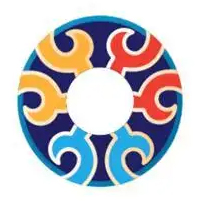Cloisonné - Precious Artwork Originated from China
Cloisonné is a precious art form that can be crafted into decorative items such as vases, plates, jars, and boxes, as well as practical crafts such as table lamps, smoking accessories, wine accessories, and tea sets. Originating from Beijing in the late Yuan Dynasty, Cloisonné is a combination of imported enamel craftsmanship and local metal enamel craftsmanship.
The characteristics of Cloisonné are exquisite shape, delicate patterns, bright, noble, and solemn colors, which embody the characteristics of beauty, dignity, and nobility. It has a unique ethnic style and is a comprehensive art that combines aesthetics from different eras and the wisdom of craftsmen from different generations.
Craftsmanship
The craftsmanship of Cloisonné is extremely complex, and it requires multiple processes to complete a piece of Cloisonné artwork. First, the copper plate needs to be shaped into a copper fetus, and then the copper wire is pinched on the surface of the fetus to form patterns. Then, the blue glaze is filled and fired through a sequence of steps. Finally, through processes such as polishing and gilding, the production of Cloisonné is completed.
In the production process, not only pottery and bronze techniques are used, but also carving and painting techniques are used for enamel filling, which makes cloisonne the culmination of traditional craftsmanship in porcelain.
History and Development
During the Ming and Qing dynasties, cloisonne had become mature in Beijing and became the most precious decoration in the court. Cloisonne products in the Ming Dynasty were mostly imitations of ancient shapes, with diverse colors and deep and realistic colors. In the Qing Dynasty, especially during the Kangxi period, cloisonne craftsmanship achieved unprecedented development and presented delicate and magnificent styles.
In the late Qing Dynasty and early Republic of China, cloisonne began to be mass-produced by the folk. In recent years, cloisonne has gradually attracted attention in the domestic and international auction markets, showing broad prospects for development. Currently, cloisonne products from China have been exported to more than 40 countries and regions around the world.
Cultural Heritage and Significance
Cloisonne symbolizes profound beauty, prosperity, elegance, wisdom, and peace. It is not only a work of art for appreciation but also represents the immortal civilization and pride of China. Cloisonne is the cultural heritage of the Chinese nation, and we should always remember its glorious history, craftsmanship, and traditional manual wisdom.

